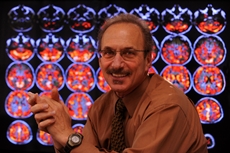How Huntington’s disease proteins spread from cell to cell
25 Jun 2015
By identifying in spinal fluid how the characteristic mutant proteins of Huntington's disease spread from cell to cell, Univeraity Of California at Irvine (UCI) scientists and colleagues have created a new method to quickly and accurately track the presence and proliferation of these neuron-damaging compounds – a discovery that may accelerate the development of new drugs to treat this incurable disease.
 | |
| University of California at Irvine Study leader Dr. Steven Potkin, UC Irvine professor of psychiatry & human behaviour / Image : Daniel Anderson |
The researchers added that the cell-to-cell ''seeding'' property of these mutant proteins seems to be a critical part of the disease's progression.
Their findings also advance a new drug-discovery approach: stopping the cellular transfer of the seeding compounds. Study results appear online in Molecular Psychiatry.
Huntington's disease is a genetically based, severe neuro-degenerative disorder that results in progressive motor, cognitive and psychiatric impairment and, ultimately, death.
There is no effective treatment for Huntington's, which – like many neuro-degenerative diseases – is characterized by an accumulation of misfolded mutant proteins that interfere with brain function.
As part of their study, the researchers introduced a new screening test that measures mutant huntingtin protein seeding in cerebro-spinal fluid, which can be obtained via a simple procedure.
This assay distinguishes symptomatic Huntington's disease subjects – who have high seeding activity – from gene carriers not yet showing symptoms – who have lower seeding activity. Fluid samples from non-HD individuals do not exhibit this seeding property.
''Determining if a treatment modifies the course of a neurodegenerative disease like Huntington's or Alzheimer's may take years of clinical observation,'' says study leader Dr. Steven Potkin, UCI professor of psychiatry & human behaviour. ''This assay that reflects a pathological process can play a key role in more rapidly developing an effective treatment. Blocking the cell-to-cell seeding process itself may turn out to be an effective treatment strategy.''
Evaluating whether a drug prevents seeding will be much quicker than longitudinal assessment of symptoms, added study co-leader Zhiqun Tan, an associate researcher at the UCI Institute for Memory Impairments and Neurological Disorders (UCI MIND).
Seeding measurements can also aid in determining the optimal dosage of a new therapy. Additionally, gauging the seeding property of misfolded proteins may prove to be useful in the development of new treatments for other neurodegenerative diseases, such as Alzheimer's, ALS and Parkinson's.
Earlier this year, study contributor Leslie Thompson of UCI's Sue & Bill Gross Stem Cell Research Center and UCI MIND received a $5 million grant from the California Institute for Regenerative Medicine to continue her CIRM-funded effort to develop stem cell treatments for Huntington's disease. In this project, Thompson and her colleagues plan to create a therapy employing human embryonic stem cells that can be evaluated in clinical trials.






























